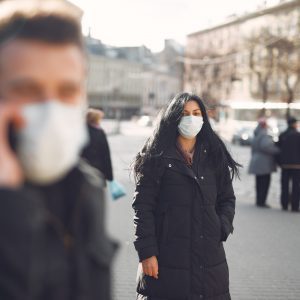Most people who have contracted COVID-19 recover within two weeks, while those who have experienced acute infection can take up to six weeks to recover. Many people are, however, experiencing a wide range of symptoms beyond six weeks, often in excess of six months.
Some common terms used to describe post-COVID symptoms include long-COVID, long-haul COVID, post-COVID syndrome as well as post-acute COVID-19 syndrome. It is critical that employers proactively recognise and implement an environment where engagement, education and encouragement is embraced and practiced.
The impact of Long-COVID manifests in three critical areas, namely physical, mental and emotional. According to the Centre for Disease Control and Prevention (CDC), Post-COVID conditions are a wide range of new, returning or ongoing health problems that people experience four or more weeks after first being infected with the COVID-19 virus. Even people who did not have COVID-19 symptoms in the days or weeks after they were infected can have post-COVID conditions. These conditions can present as different types and combinations of health problems for different lengths of time.[1]
Examples of common symptoms of long-COVID include:
- Tiredness or fatigue
- Difficulty thinking or concentrating (also referred to as “brain fog”)
- Shortness of breath or difficulty breathing
- Headache
- Dizziness on standing
- Fast-beating or pounding heart (referred to as “heart palpitations”)
- Chest pain
- Cough
- Joint or muscle pain
- Depression or anxiety
- Fever
- Loss of taste or smell
This list is not exhaustive. Some people also experience damage to multiple organs including the heart, lungs, kidneys, skin and brain.
Post-hospitalisation symptoms can present many weeks after contracting COVID-19 and may be similar to those experienced by people who initially experienced mild or no symptoms. It is difficult to ascertain whether these symptoms are caused by the effects of hospitalisation, the long-term effects of the virus, or a combination of both. These health complications may also arise from other COVID-19 related conditions, including mental health issues stemming from isolation, negative economic situations and the lack of access to healthcare for managing underlying conditions.
Long-COVID’s impact on the workplace
Employees who present with post–COVID conditions often feel misunderstood and unsupported due to a lack of understanding by employers and colleagues.
The significance of the financial impact to an employer is grossly underestimated, which is why it is imperative that employers adopt a proactive management approach by engaging and educating management and staff members on the topic. The implementation of support systems will also greatly assist employees who are experiencing Long-COVID symptoms.
Long-COVID’s impact on the employer and the employee manifests in the form of:
- Continuous sick leave due to symptoms being ignored or overlooked.
- Employees who are unable to function at previous levels resulting in a decline in work productivity.
- Employees who present as being irritable and anxious.
All of these scenarios can lead to self-esteem issues and depression. A pro-active approach promotes and encourages an engaged, productive workforce. Early interventions can prevent future disability claims which would otherwise increase overall costs of benefits, training and recruitment.
How employers can manage the impact of long-COVID
- Ensure education and awareness around symptoms, how to manage these and guidance on where to seek help.
- Arrange for return-to-work check-ins via HR or the employee’s line manager and discuss any employee concerns.
- Allow for a reasonable adaptation period around work duties to accommodate an employee who is in the recovery stages – this should be strictly monitored and agreed with the employee.
- Keep a record of progress and introduce regular feedback sessions.
- Consider and implement an Employee Assistance Programme (EAP) to assist with mental and emotional support.
- Encourage employees to obtain assistance from their employer- appointed broker in understanding the benefits of an EAP and how to access the long-Covid benefits provided through the medical scheme.
Prevention is better than cure
The best way to prevent post-COVID conditions is to prevent COVID-19. It is imperative for employers to implement a programme that encourages employee vaccinations against COVID-19, to protect themselves and their colleagues around them. And as we head into the December holiday season, a fourth wave and the new Omicron variant, it is crucial for all to remain vigilant, maintain your social distancing and keep your mask on in public areas.
Jacqui Nel is the Business Unit Head of Healthcare at Aon South Africa.









